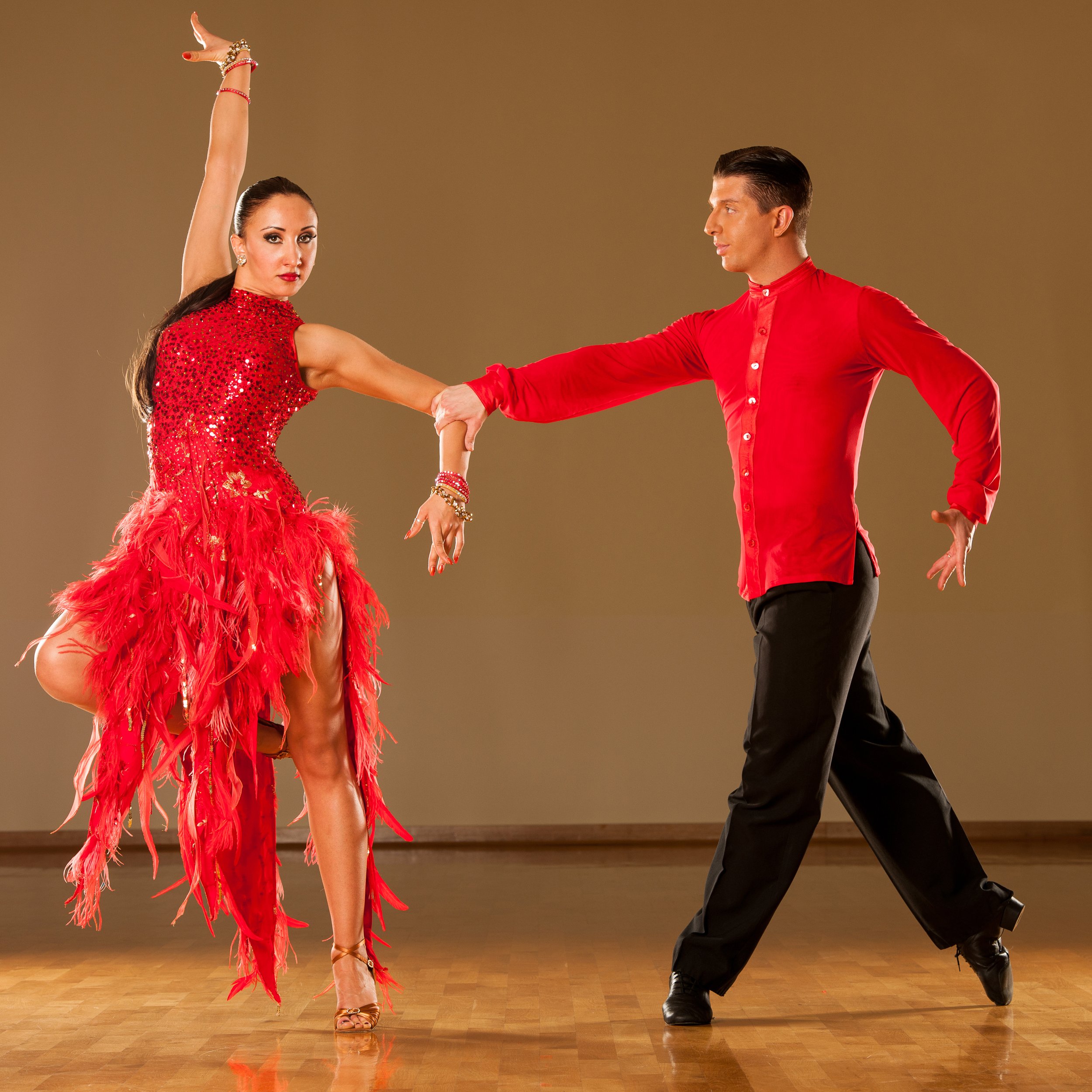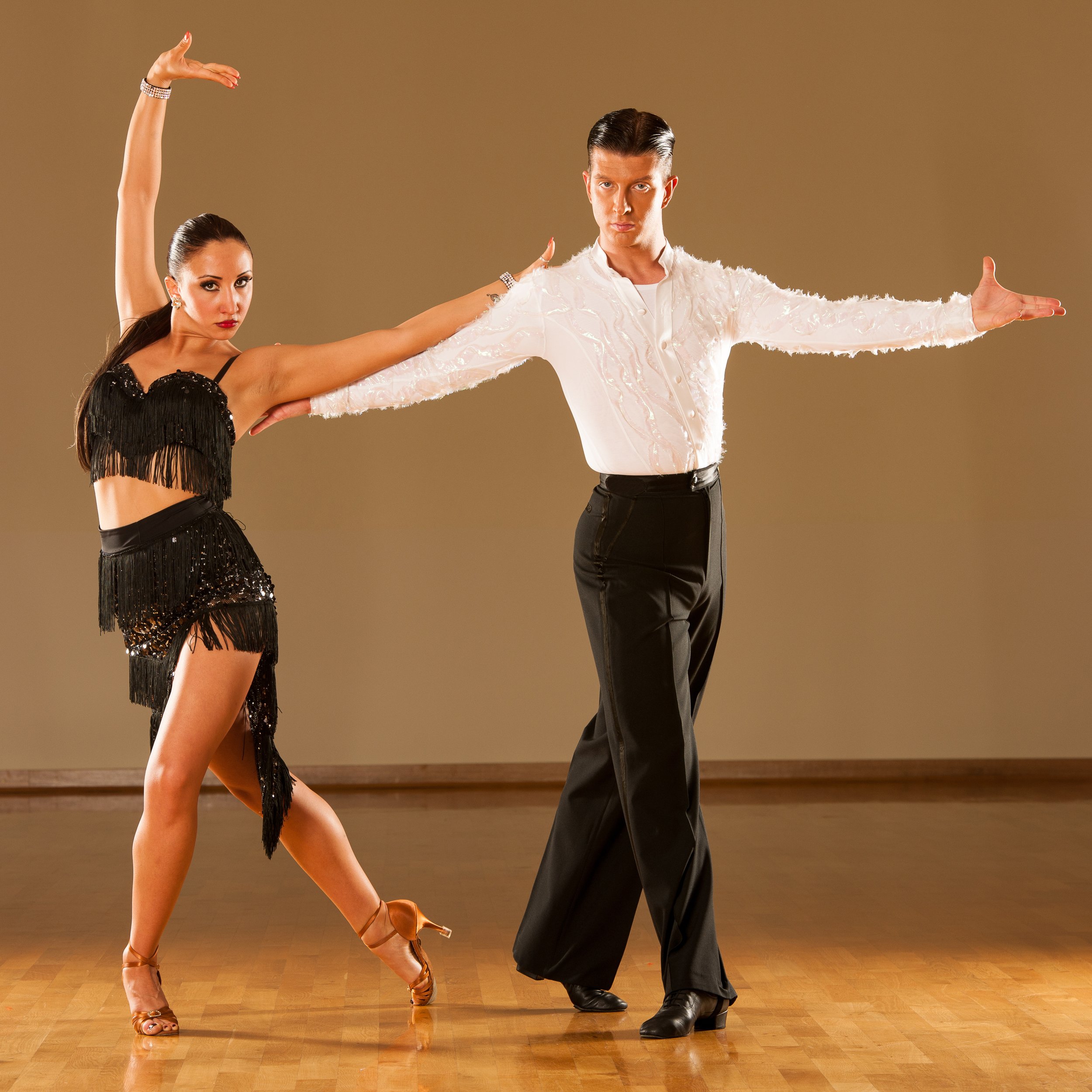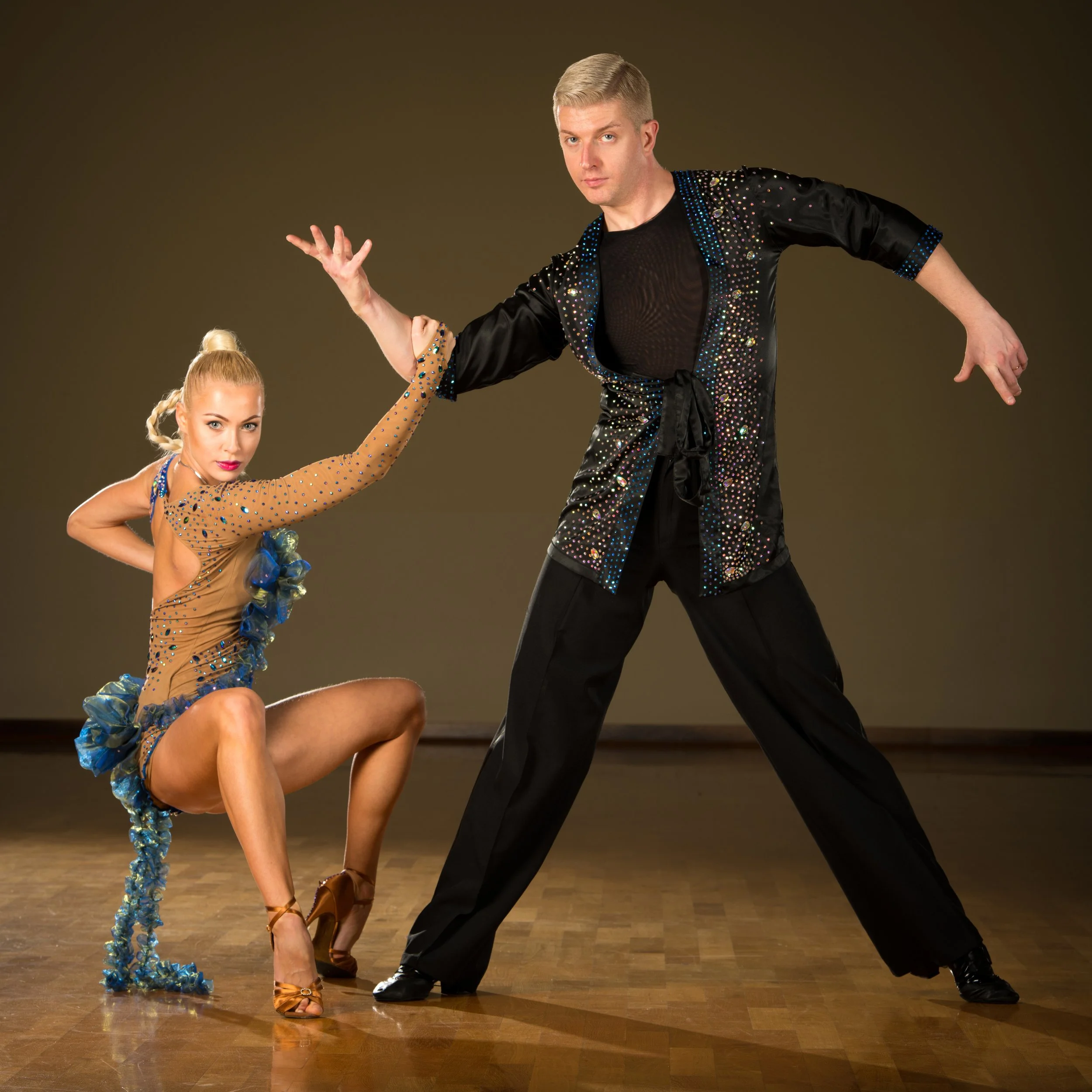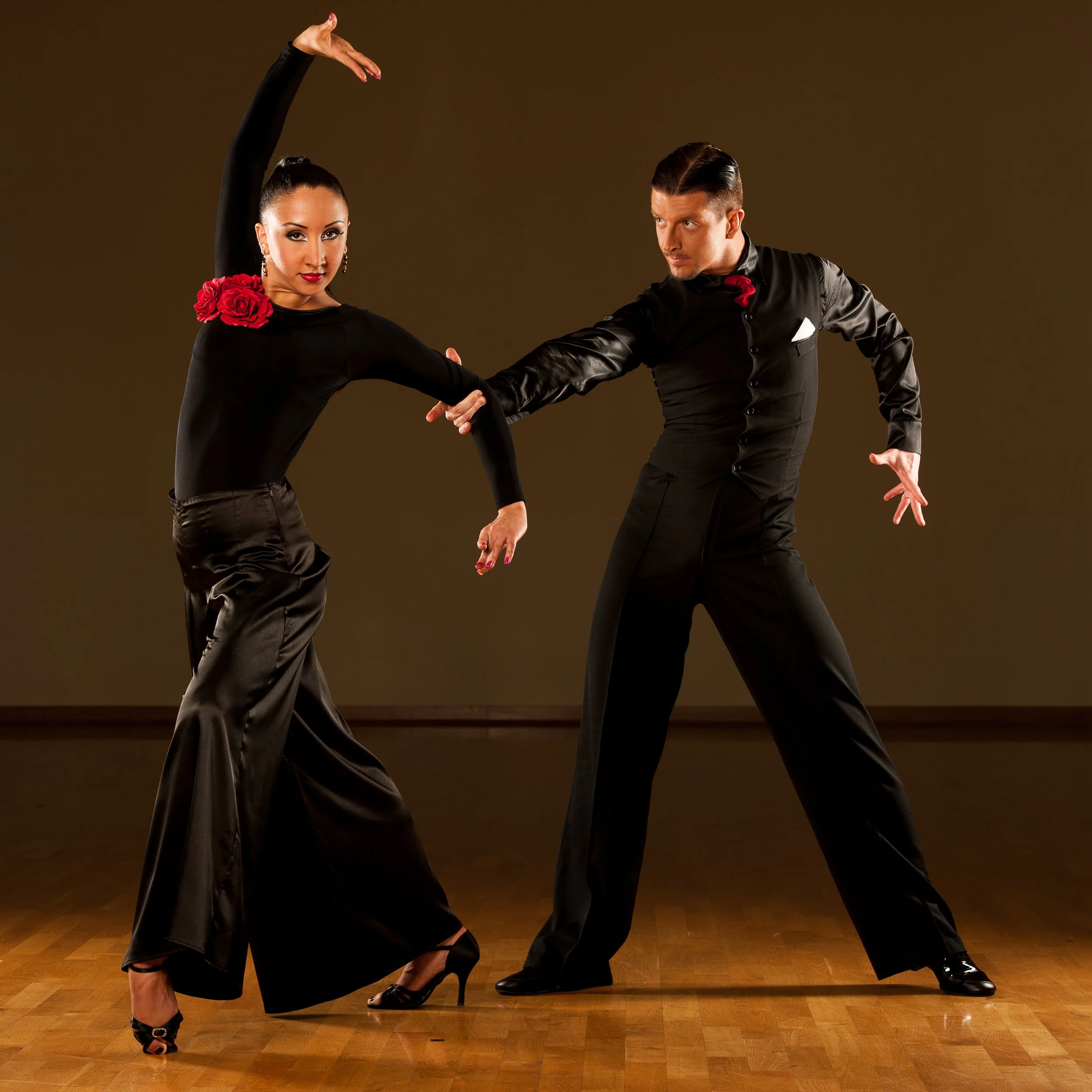Cha Cha Cha
Renowned for its social appeal and competitive edge, learning the Cha Cha can be an enriching endeavor.
This dance pulsates to a unique "4, &1" rhythm, playfully counted as "Cha Cha Cha." It's characterized by its flirtatious charm and sensuous movements, complete with exciting turns and playful checks.
The International Latin Cha Cha Cha is defined by its sharp pendulum hip movements and consistently straight legs, while the American Rhythm style brings a dynamic interaction between partners with 'Cuban Motion,' offering patterns that are both socially engaging and accessible.
Samba
Dive into the intricate world of International Style Samba, a competitive dance celebrated for its complex and lively 'Bouncing' action.
Drawing inspiration from Brazil's iconic Carnival Samba, the International Style Samba offers a unique interpretation that stands apart. Though it may be unrecognizable as 'True Samba' to some Brazilians, it captivates with its own energetic flair.
Samba stands out in the Latin dance repertoire with its dynamic progression across the dance floor, echoing the traveling essence of dances like the Foxtrot or Waltz. Its steps showcase the characteristic bounce, adding to its energetic and distinctive nature.
Rumba
Experience the romantic allure of Rumba, the most graceful and leisurely of the competitive Latin dances. Known for its sensuous hip movements and leg action, Rumba captures a deep sense of romance, making it an ideal choice for wedding dances.
In the American 'Rhythm' style, Rumba incorporates the iconic 'Cuban Motion' within the classic 'Box Step', establishing it as a favorite at Ballroom and Latin social events.
Sharing its lineage with the energetic Cha Cha Cha, Rumba is characterized by a slower tempo, allowing dancers to savor each move within the music's three-step beat, unlike the Cha Cha Cha's brisk five steps per bar.
Paso Doble
Step into the dramatic world of Paso Doble, the dance of the Matador, which emerged in the 1920s as a celebration of triumph in bullfighting arenas. Gaining mainstream traction in Southern France with English influences, it became a celebrated Latin dance competition staple by 1945.
Paso Doble, or the 'Dance of the Matador,' epitomizes bravery with the lead dancer embodying the Matador and the follower symbolizing the Matador's cape, and occasionally, the bull or a Flamenco dancer, depending on the dance's narrative. This dance is a powerful display of artistry, where the man's commanding presence and the woman's fluidity tell a story of tradition and passion.
Jive
Jive, a lively dance born from the 1930s American dance scene, embodies the vigor of Jitterbug, Boogie-Woogie, Lindy Hop, and more. This high-energy dance is characterized by athletic chassés, rock steps, and spirited leg actions like kicks and flicks.
While competitive Jive is famed for its brisk tempo, it's also adaptable to the smoother rhythms of East Coast Swing and Foxtrot, making it a versatile favorite on the dance floor."





